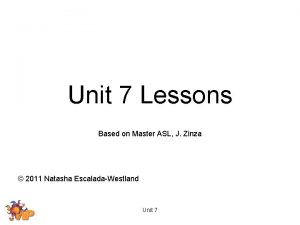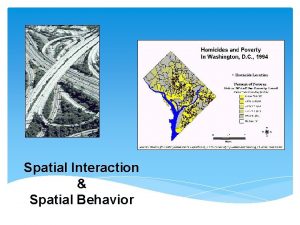Spatial Organization Spatial Organization Spatial Organization is defined





- Slides: 5

Spatial Organization

Spatial Organization • Spatial Organization is defined as, describing an object, device, or physical location. • Spatial Organization often includes phrases such as “east of the location”, “to the right”, or “read from left to right”. Without such organization the document could be confusing.

Illustration #1 Read graphic from left to right. This graphic illustrates Spatial Organization by showing how an object (virus) goes through a location (cell). By demonstrating the location of the virus's actions the graphic effectively secures it’s classification as Spatial Organization.

Illustration #2 The Water Cycle: What environmental conditions make it possible for the state rain? Another name for the water cycle is the hydrologic cycle. Basically, it involves three to five steps: water collected in an ocean or other source evaporates into the air and becomes clouds; the water then gathers together to become heavy enough to fall as rain. The rainwater eventually collects in pools of water which evaporate again. This is a cycle, so it always continues - water never stops moving. These are the different processes water goes through in order to cause rain. 1. Evaporation – The process when the sun heats water in ocean, rivers, lakes, and ponds the and turns it into vapor or steam, which then rises into the air. 2. Condensation – The process when water vapor cools and turns into tiny water droplets that attach to each other and form clouds. 3. Precipitation(rain) - Water falls from the clouds as rain, sleet, hail, or snow. 4. Runoff – This process consist of when water stays on the earth’s surface and flows into rivers, lakes, reservoirs, etc. 5. Transpiration – The process by which moisture is carried through plants from roots to small pores on the underside of leaves, where it changes to vapor and is released to the atmosphere.

Works Cited • Illustration #1 - Freund, L. Ben. “When It Comes To Cell Entry, Being Average Has Its Advantages”. Brown News 21 June 2005. • "H 2 O | The Water Cycle. " H 2 O | Welcome! Web. 08 Sept. 2011. <http: //www. all water. org/Water_Cycle. html>. • Almost There. Web. 08 Sept. 2011. <http: //wwwk 12. atmos. washington. edu>. • "H 2 O | The Water Cycle. " H 2 O | Welcome! Web. 08 Sept. 2011. <http: //www. all-water. org/Water_Cycle. html>.









